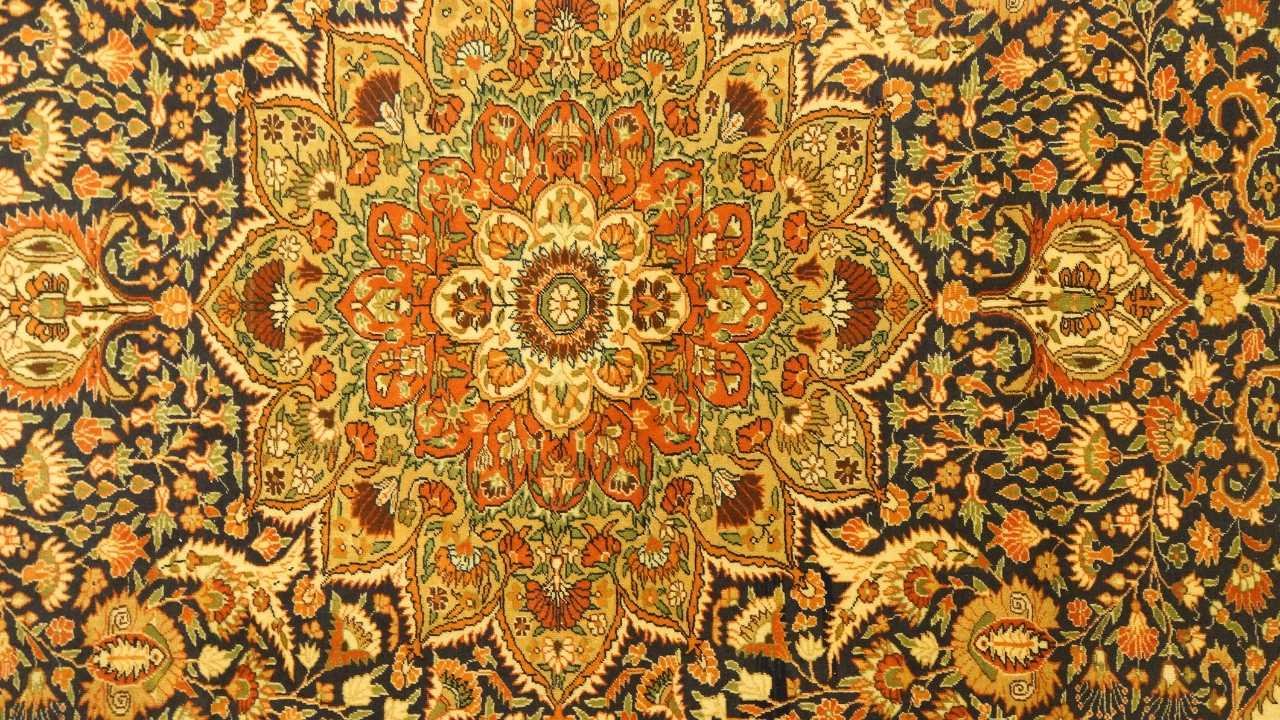If you’ve ever found yourself admiring the beauty and craftsmanship of intricate rugs, you may have come across the terms “Persian rugs” and “Oriental rugs.” These two types of rugs have captivated people around the world for centuries with their stunning designs and rich cultural heritage. But what exactly sets them apart?
Here Rugs and Carpets are going to describe to you the main difference between these both Persian and Oriental rugs.
The Origins of Persian and Oriental Rugs
Persian Rugs: Let’s begin our journey by exploring the enchanting world of Persian rugs. As the name suggests, Persian rugs originate from Persia, which is present-day Iran. The art of weaving Persian rugs dates back thousands of years, with a rich history deeply rooted in Persian culture. Persian rug weavers have long been revered for their exceptional skills and attention to detail, creating masterpieces that have stood the test of time.
Oriental Rugs: Now, let’s shift our focus to Oriental rugs. Unlike Persian rugs, the term “Oriental rugs” encompasses a wider range of rugs that originate from various countries in Asia, including China, India, Turkey, and many others. Oriental rugs have their own unique characteristics, designs, and weaving techniques, reflecting the diverse cultures and traditions of the regions they hail from.
Distinctive Characteristics
Persian Rugs: Persian rugs are renowned for their intricate designs and exquisite craftsmanship. They are often handwoven using high-quality wool, silk, or a blend of both. One of the distinguishing features of Persian rugs is their use of asymmetrical knots, also known as Persian knots or Senneh knots, which contribute to their durability and intricate patterns.
These rugs often showcase elaborate floral motifs, geometric patterns, or intricate medallions, and the colors used are usually rich and vibrant, ranging from deep blues and reds to earthy tones.
Oriental Rugs: On the other hand, Oriental rugs display a wide range of designs, reflecting the distinct styles of different regions. They may feature floral patterns, animal motifs, intricate geometrical designs, or even scenes from mythology or religious tales. Oriental rugs are typically crafted using various materials such as wool, silk, or cotton.
Some Oriental rugs, particularly those from China, may incorporate silk threads, resulting in a luxurious and lustrous finish. Similar to Persian rugs, Oriental rugs are handwoven, with their own unique knotting techniques.
Key Differences
Persian and Oriental rugs share certain similarities, there are several key differences that set them apart:
Geographical Origin: Persian rugs specifically originate from Iran, while Oriental rugs encompass a broader range of rugs from various Asian countries.
Designs and Patterns: Persian rugs often feature intricate floral motifs, elaborate medallions, and curvilinear patterns, while Oriental rugs embrace a wider range of designs, including floral, animal, and geometric patterns.
Color Palettes: Persian rugs tend to showcase a rich and vibrant color palette, including deep blues, reds, and earthy tones. On the other hand, Oriental rugs may feature a broader spectrum of colors, including softer pastel shades.
Knotting Techniques: Persian rugs primarily use asymmetrical knots, which are known for their durability and flexibility. Oriental rugs, depending on their country of origin, may employ a variety of knotting techniques, such as the symmetrical Turkish knot or the more intricate Chinese knot.
Cultural Influences: Persian rugs often incorporate elements of Persian culture, mythology, and symbolism, reflecting the country’s long and storied history. Oriental rugs, on the other hand, draw inspiration from the diverse cultures and traditions of the regions they come from, resulting in a rich tapestry of styles and designs.
Iranian Carpets Have Several Peculiarities
There are many allusions to Iran in contemporary Persian area rugs. The most important contrast between Persian rugs and other types of Oriental rugs is found in their designs.
The following is a list of the four basic designs that could be seen on a standard Persian rug: all-over, compartment, center medallion, or one-sided pattern.
- Most designs are symmetrical or give the impression of being symmetrical
- Warm tones are often used in the design of Persian rugs
- The animal’s wool has been colored with sage, golden yellow, scarlet, ivory, and indigo
- Patterns seen in Persian rugs are often found in Oriental rugs, but with a unique twist
- Traditional Persian rugs often have straighter lines
- These rugs sometimes incorporate flower and animal themes with greater curves
- In addition, they have an agricultural landscape, lakes, and woods, as well as hilly terrain
- Many oriental rugs have sculpted motifs woven into them, using contrasting colors to provide dimension to the woven patterns
- It is possible to get a three-dimensional appearance in the field by removing elements such as flowers, trees, and clouds
Also Read: How to Calculate Carpet Area
What Characteristics Distinguish Persian Rugs From Oriental Rugs?
Sometimes you cannot define the rug’s difference, especially between oriental and Persian carpets.
- The natural wool fibers, historically significant and elaborate patterns, skillful craftsmanship, and long-lasting nature of these rugs contribute to their widespread popularity
- The value of antique and ancient carpets continues to rise over time. In addition to that, each kind of rug is created by hand
- Because of this, they are a treasure that will continue to bring joy and sophistication to your house for many years.
What Kinds of Fabric Are Used to Construct Persian Rugs?
- Silk: Silk made by caterpillars is used by certain painters.
- Bamboo Silk: Bamboo silk is produced from the bamboo plant. Bamboo silk is an alternative for those who oppose the terrible treatment of animals, and bamboo silk delivers identical benefits.
- Sheep Wool: Sheep have their fleeces shorn of their wool once a year.
- Synthetic Artificial Material: Synthetic materials are never used to produce authentic Persian rugs, and not authentic. A synthetic material such as jute, acrylic, nylon, viscose, polypropylene, or any other synthetic is used to manufacture a Persian rug.
What Kinds of Materials Are Used to Construct Oriental Rugs?
Oriental rugs are made using high-quality materials throughout the manufacturing process and use those same materials during crafting.
Wool or silk are the traditional materials used to produce oriental rugs. In addition to that, it is crafted using methods that include hand-knotting.
Making an Informed Choice
When it comes to selecting between Persian and Oriental rugs, personal preferences, budget considerations, and the desired aesthetic play a crucial role. Both types of rugs offer unique beauty and undeniable charm, each with its own cultural significance.
Whether you choose a Persian rug with its intricate patterns and vibrant colors or an Oriental rug with its diverse designs and rich heritage, investing in these timeless pieces will undoubtedly add a touch of elegance and sophistication to any space.








